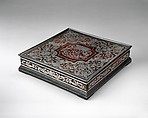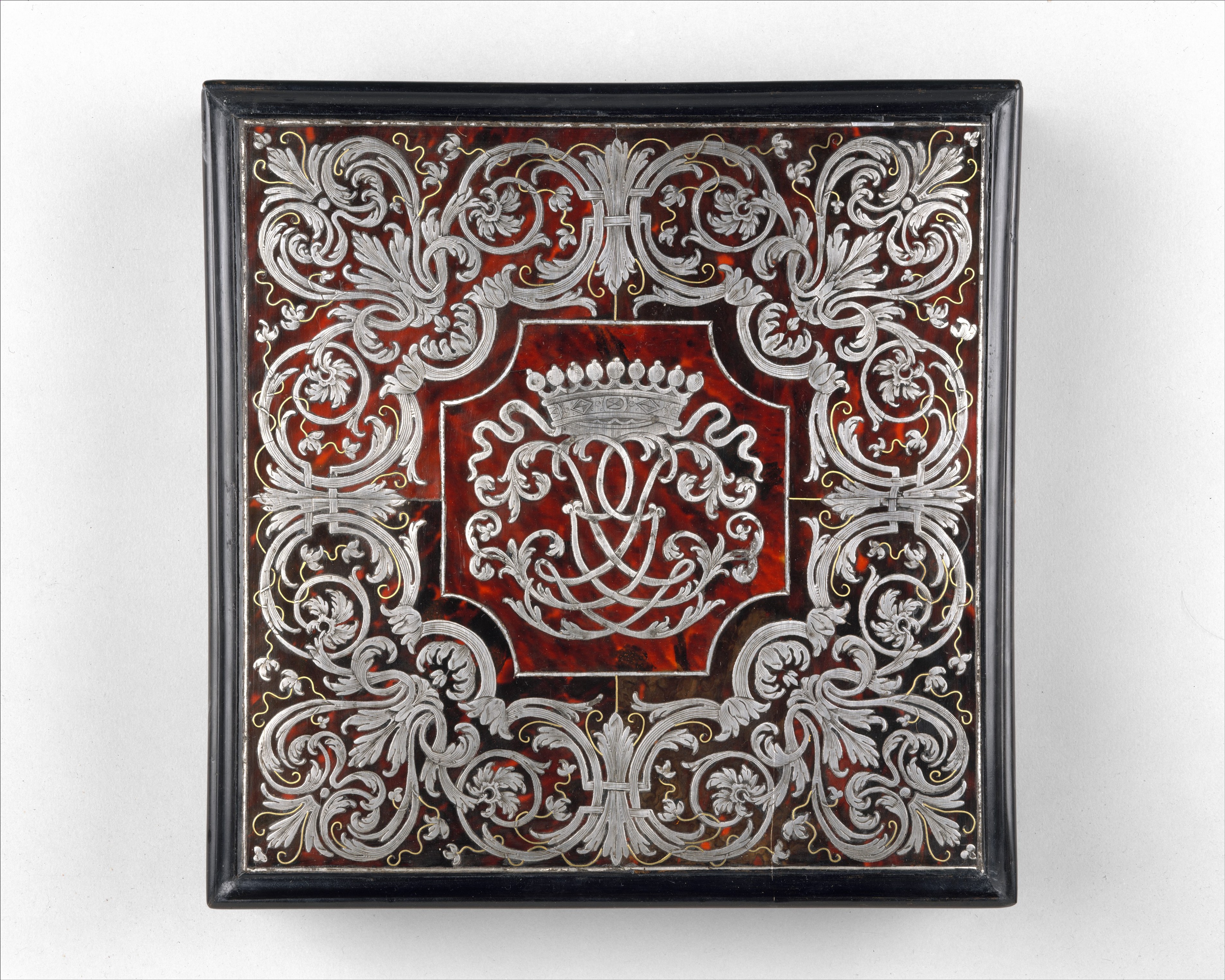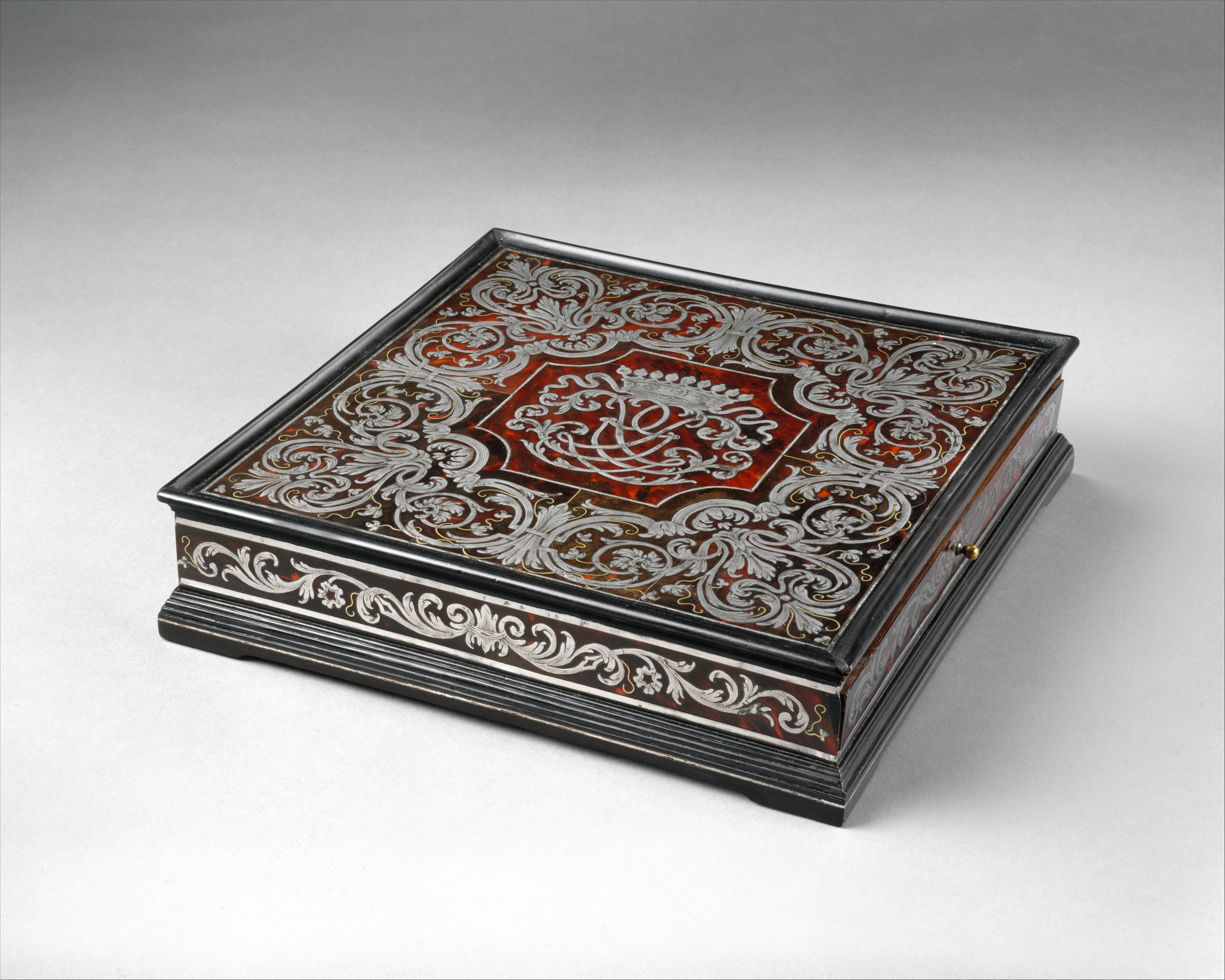Writing box
Ferdinand Plitzner German
Not on view
During the seventeenth and eighteenth centuries luxurious boxes, similar to this one, that held writing and sealing implements had an obligatory place in the ceremonial setting of every Central European court. The elaborate decoration and preciousness of the materials reflected the owner's aristocratic status. Although frequently mentioned in contemporary inventories, such stately boxes have rarely survived the changing writing habits of later generations. This refined box shows a hitherto-unidentified monogram, incorporating the letters LG beneath a count's coronet; it is the only box of this type currently known of German origin. Plitzner was the most important German cabinetmaker of the early eighteenth century. His works reveal perfect mastery of contemporary French design and cabinetmaking especially evident in the box's complicated marquetry, which is influencedb y Louis XIV's great furniture designer, Andre-Charles Boulle (1642–1732). Among Plitzner's main noble patrons were several members of the Schonborn dynasty, for whom he created ceremonial furniture and one of the most important monuments of the late Baroque period in Germany: the intarsia panels for the mirrored room at Pommersfelden Castle in Franconia.
Due to rights restrictions, this image cannot be enlarged, viewed at full screen, or downloaded.
This artwork is meant to be viewed from right to left. Scroll left to view more.





